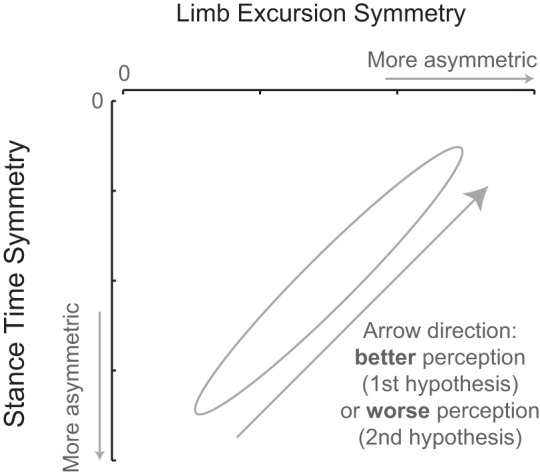Fig. 1.

Perception of belt speed differences: two opposing hypotheses. According to the stance symmetry hypothesis, participants who are better able to perceive differences between belt speeds will walk with more symmetry in stance time and more asymmetry in limb excursion than participants who are less able to perceive belt speeds differences. Diagram shows the expected inversed coupling between limb excursion symmetry and stance time symmetry. Data points in top right corner (small asymmetry in stance times, large asymmetry in limb excursions) would be for participants who are well able to perceive differences between belt speeds; data points in bottom left corner (large asymmetry in stance times, small asymmetry in limb excursions) would be for participants who are less able to perceive differences between belt speeds. Alternatively, according to the limb excursion symmetry hypothesis, participants who are better able to perceive differences between belt speeds will walk with more symmetry in limb excursion and less symmetry in stance time than participants who are less able to perceive belt speeds differences.
